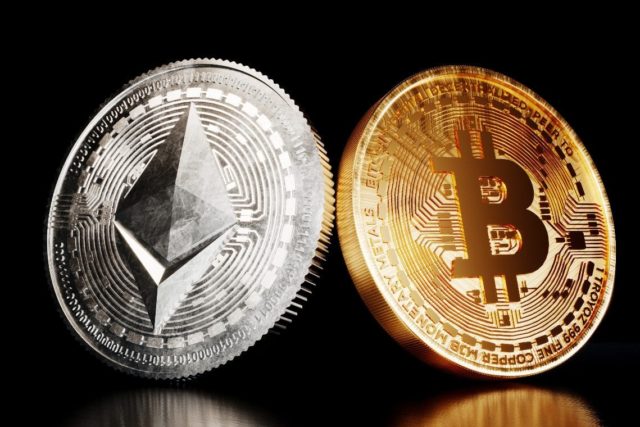In little more than a month, the price of dollar in relation to real went from R$4.81 to R$5.42 last Wednesday. As a result, the currency reached its highest value in six months, reflecting the effects of a combination of unfavorable domestic and foreign scenarios.
Even though, the day before, the dollar fell by 1.45%, closing Thursday at R$5.344, the level is still considered high.
This movement, however, was not exclusive to Brazil. The dollar reached record values, for example, against strong currencies like the pound sterling it’s the euro . In the latter case, some analysts already project a parity between the currencies.
However, internal issues of each country can influence this increase more or less. In the Brazilian case, the return of fiscal risk in recent weeks it has served as a repulsion factor for investments, making the situation worse.
And, for experts consulted by the CNN Brasil Business the situation should not improve in the short term, with the expectation of negative news both abroad and internally.
Causes
Considering the lowest value that the dollar reached in 2022, from R$ 4.59 on April 4, the currency’s rise reached 18.3% considering the value on July 6.
Roberto Dumas, chief strategist at Voiter and professor at Insper, points out, however, that the value is not very different from the rest of the world. The euro, for example, has already dropped 18% against the US currency. countries like Chile and Colombia recorded similar declines.
Therefore, he considers that the main factor for the appreciation of the dollar against the real is external. “The risk of a recession in the United States makes people leave countries and go to the country’s treasury bonds. The 10-year yield dropped from 3.30 to 2.87, and when it drops it’s because the price has gone up, so demand has increased,” he explains.
The risk cited by Dumas has gained strength in recent weeks among investors due to the intensification of the cycle of interest rate hikes in United States .
To deal with the highest inflation in 40 years O Federal Reserve raised interest rates in June by 0.75 percentage point, the highest since 1994. As a result, bets on a recession in 2023 grew, which leads to an increase in risk aversion and migration to safer assets, such as the dollar .
Patricia Palomo, head of Investments and Operations at Unicred, states that “the dollar has also been gaining value due to this scenario of reduced global growth as a consequence of the increase in interest rates both in the United States and in Europe”.
The professor also points out factors that reinforce global uncertainty, such as interest rate hikes in other countries, new lockdowns in china or possible economic consequences of the war in ukraine .
According to Palomo, “emerging countries in general end up suffering more in these movements [de saída de investimentos]and when we add this to the domestic factors of each one, the effects on the devaluation of the currencies themselves can be potentiated”.
In this sense, Dumas assesses that “the world is in trouble, and the main problem is external”. That is, this does not mean that the only cause is external.
In the case of Brazil, he cites the presentation of the Benefits PEC for the government.
The project creates or expands a series of social benefits, with an estimated expenditure of R$ 41 billion. It also involves the declaration of a state of emergency, which would allow these expenses to be carried out outside the roof .
According to Dumas, the project “has increased fiscal risk, because it may continue in 2023, and the market is afraid that the government will lack fiscal rectitude. As positive as it is to help those in need, can’t the government cut anything? Need a PEC? That will have an effect down the road.”
Palomo, on the other hand, assesses that the dollar’s movement was intensified by “uncoordinated economic decisions that create greater uncertainty in relation to the behavior of important variables such as the interest rate level and the dynamics of increasing public spending”.
“This component of uncertainty ends up bringing greater volatility in the relative prices of the real against other currencies”, he says.
Can the dollar rise further?
For experts, the trend is that the dollar does not have a significant devaluation against the real in the coming months, even if there are occasional drops, as happened this Thursday.
In Palomo’s view, “the cooling of commodity prices observed in recent weeks helps to remove external pressure from the appreciation of the dollar, but the domestic part makes it difficult to read a clear trend for the exchange rate”.
For the analyst, the absence of coordination between the government’s fiscal policy, with increased spending, and the Central Bank’s monetary policy, which is contractionary with high interest rates, should maintain uncertainty about the dynamics of public accounts, harming the real.
“Recent signs show that the impetus for higher spending is widespread in the political field. In this way, the market sees fiscal risk as a reality that is already showing effects both on the domestic yield curve and on the exchange rate”, he says.
Roberto Dumas assesses that the chance of the dollar returning to below R$5 in 2022 is small.
On the one hand, investor migration to the US is expected to continue as the Federal Reserve continues its rate hike cycle.
In addition, the positive performance of the real in the first quarter was supported by an effort to diversify investments by foreigners and bets on high commodity prices, two things that should not be repeated.
Added to the adverse external environment, the professor cites the uncertainties surrounding the presidential election in 2022.
“The electoral race has not even started, and it should be heavy, so there is still room for exchange rate depreciation, we can see the dollar at R$ 5.50, R$ 5.70. Everything is possible, it may even fall, but most likely the real will depreciate,” he says.
Internally, he also highlights that investors should remain alert to the possibility of new spending outside the ceiling, with any negative news in the fiscal area tending to further harm the exchange rate.
“For the dollar to fall is difficult, but it would be necessary to completely rule out a recession in the United States or else the government here maintain fiscal rectitude, try to avoid spending beyond the ceiling”, he evaluates.
Faced with this bullish scenario, Dumas says that it is possible that the central bank review your plans and raise interest rates even further to try to contain the exchange rate devaluation and its inflationary impacts.
“If the dollar continues above R$ 5.40, it would require new positioning, as the situation could lead to an undocking of expectations for inflation”, he says.
Source: CNN Brasil
I am Sophia william, author of World Stock Market. I have a degree in journalism from the University of Missouri and I have worked as a reporter for several news websites. I have a passion for writing and informing people about the latest news and events happening in the world. I strive to be accurate and unbiased in my reporting, and I hope to provide readers with valuable information that they can use to make informed decisions.







